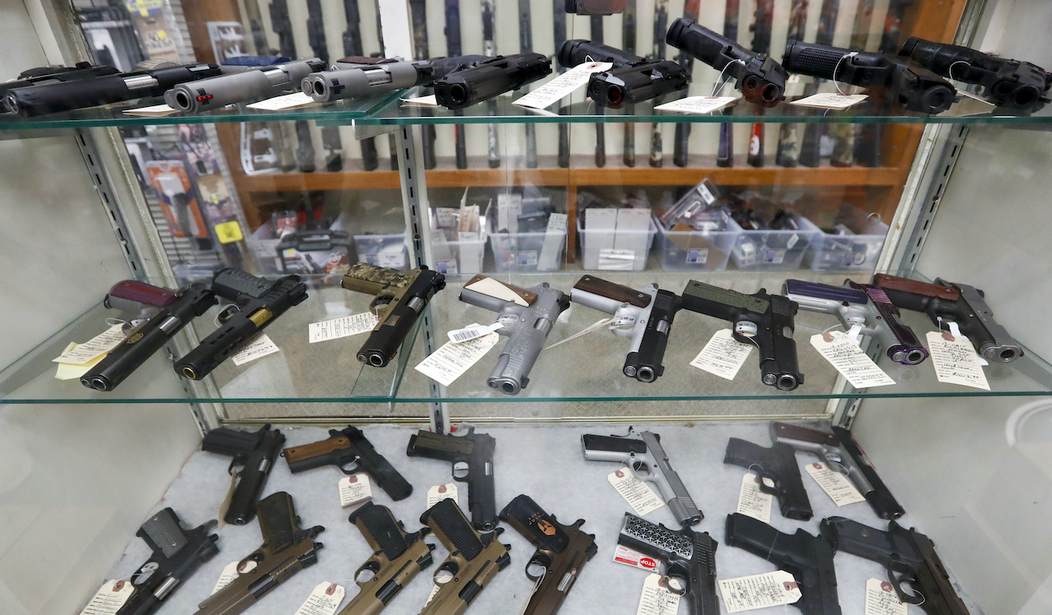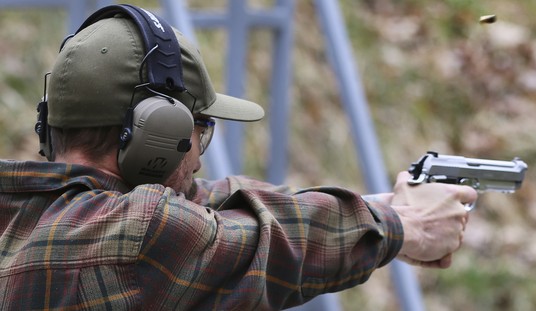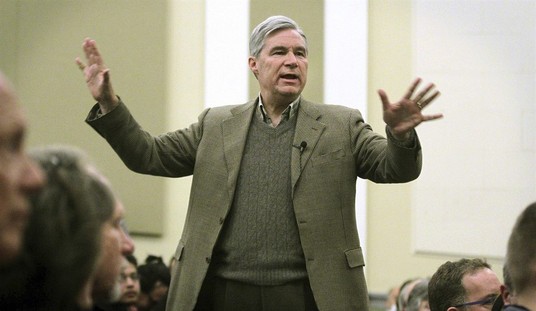For those who actually look at how guns end up in criminal hands, it’s hard to really see it and think that law-abiding firearm owners or dealers are the problem. After all, the bad guys get them by breaking the law. They steal them or obtain them through fraudulent means. They’re not exactly walking into a store and telling the guy behind the counter that they need something to rob a curb store with.
It’s just not happening.
However, the media tends to trip over itself trying to make it about the lawful firearm market. They do everything they can to try and paint folks like you and me as part of the problem.
Over at the Philadelphia Inquirer, they’re taking a look at violent crime. I mean, their congresswoman just got carjacked, so that makes sense.
However, it looks like they’re almost starting to get it.
They left with $100 from the register and, much more valuable, a 9mm Glock 26 semiautomatic pistol loaded with eight rounds.
And in that moment, another weapon entered Philadelphia’s surging tide of stolen guns, one that has risen in the last two years to an unprecedented high water mark.
Reports of stolen guns reached a new peak this year, with 1,388 to date, police records show. That is 11% higher than last year, 38% higher than in 2019, and the highest tally since 2011, the first year figures were available.
At the same time, Philadelphia has recorded more homicides this year than ever before — 545 — the vast majority of them caused by gunfire. In all, nearly 4,500 people have been injured by gun violence since 2020. The medical trauma and emotional toll on their family and friends fuel an immeasurable public health crisis.
…
The swelling ranks of gun owners over the last two years has likely made the stolen gun problem worse, said Daniel Semenza, a Rutgers-Camden University criminal justice professor who coauthored a study this year that examined how the availability of guns impacted the homicide rates in 226 cities for years 2017 to 2019.
“There are more guns in stock in the community as a whole,” he said. “There’s a greater likelihood that at least some of those guns are going to be informally traded, or gifted, or handed off between family members, and some of those could end up in the hands of people who use them for violent means.
“The thing that really correlates with gun homicide rates is the access to stolen guns,” he said. “It trumps any kind of effect that the number of firearm dealers and general legal access has in a city, and it’s particularly important in cities that have poorer socioeconomic status.”
This isn’t wrong. While Semenza appears to be arguing that more guns in private hands correlate to more stolen guns, his argument still revolves around the fact that stolen guns are the actual problem. And he may have a point that if there are more lawful guns floating around, then there are likely to be more guns stolen. I can see that being accurate, even if politically inconvenient.
Unfortunately, the Inquirer then goes right into talking about guns stolen from cars.
Now, I’ve talked about this myself and I’ve lashed out at people leaving guns in unlocked cars–and this happens far more than it should–but let’s also put this into some perspective. Apparently, in 2021, there have been 362 guns stolen from vehicles.
That’s the issue? Seriously?
Philadelphia has more than 1.5 million people. I’m sorry, but 362 guns sound like a statistical anomaly in light of the total population of the city.
While guns stolen from vehicles are bad and I’m more than willing to blast anyone stupid enough to leave a firearm in an unlocked car, let’s not pretend this is even the lion’s share of the problem in the city. It’s not.
It’s the guns stolen from everywhere else that seem to be the issue.
No, check that. It’s the jackwagons who are running around with these stolen guns that are the real issue. A gun, by itself, is nothing but an expensive mechanical paperweight. It takes a person to actually use it and make it do something, and a firearm doesn’t care if it’s serving hero or villain. It just is.
By noting that the problem isn’t guns in the hands of law-abiding citizens, but the actions of criminals, the Inquirer almost seems to understand the issue. Then they try to put it on guns in cars in an effort to paint the real problem as irresponsible gun owners.
It’s funny, too, because they’d never blame victims of any other crime as being some kind of a problem.








